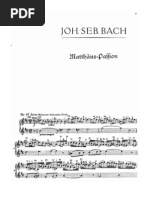Rhythmic Training Robert Starer Pdf Merge
Object Moved This document may be found here. Oct 01, 2018 Preview — Rhythmic Training by Robert Starer. Jul 25, Amy rated it it was amazing. Denzel Richard marked it as to-read Feb 27, Vincent T rated it really liked it Rhythmic training by robert starer 30, Assures better, quicker sight-reading, ear-training, rhythmic proficiency, and introd Instructional. Singing Books That Develop Our Sense Of Rhythm! There are many singing books out there in the market that help to develop our sense of rhythm when we sing! Here, I will recommend you some useful books or audio CDs that will aid you in your rhythm training.

In my studio almost all of my middle & high school students participate in performance groups in addition to regular lessons & group classes. Some students are members of community orchestras, youth symphonies or their school orchestra. Others play as a soloist in their church or with their school’s choir. As their teacher, I try to make sure I am preparing students to play in these groups by integrating sight reading and rhythmic studies into their lessons as soon as I can so they have a successful experience and can enjoy all the fun these activities offer. I wanted to share the system that I use to progress students from a basic understanding of note values to being able to sight read complex rhythm patterns comfortably. Some of these ideas are my own and many others are tips and ideas that I’ve picked up from various workshops, institutes and teacher training courses.
I am always looking for ways to improve my process, so if you have any tips you’d like to share, please leave them in the comments. Step One: Note Values I start introducing note values to my pre-twinklers as soon as they understand the concept of counting to 4.
I have a set of rhythm sticks that students love to hit together while counting and that make this a fun part of lessons. I also made a set of rhythm cards with a large sharpie and 11 x 14 inch poster board that fits really nicely on a music stand. I start by introducing quarter notes, then half notes and then slowly progress to whole notes, eighth notes, dotted half notes, rests, and finally 16th notes. Here are the first 4 cards I use in lessons. Card #1 After introducing each note value I have 4 – 5 cards with various patterns that mix up the rhythms learned so far (like the last card pictured). Just one tip I’d like to add for working with very young students.
I assign a number value to each type of note “1” for quarter notes & “2” for half notes and we count each note as their own number value (so card number one would be counted 1-1-1-1). I have found when I didn’t simplify the rhythm this way and students practiced counting to 4 for four quarter notes, that when asked how many beats a quarter note has they would always answer “4” because that is what they were in the habit of counting up to with quarter notes. Now we just focus on using the value of each note when practicing rhythm cards and practice counting up to the number of beats per measure in step two. The transition works beautifully! (Older students will probably not need to worry about that at all). Step Two: I Can Read Music by Joanne Martin There are two volumes to this series that are great & the series is published for cello and viola (in addition to violin). Many music stores carry this book (or will order it for you).
It can also be found on, and. On the rhythm page for each lesson, students clap and count (out loud) each line before playing it on their instrument. Since they already understand the concept of note values, students can focus on the time signature, looking for bar lines/new measures and counting in their head while playing.
Become an expert. Accounting software in visual basic free source code download.
By the time the student finishes book two they should be able to sight read (with very accurate counting and rhythm) little melodies in first position with rhythms ranging from quarter notes to sixteenth notes. Step Three: Rhythmic Training by Robert Starer There are a few versions of this book out there – the one I use has a white cover (pictured below) and does not say “workbook” on the cover. The other books are a great introduction but this version goes more in depth.

Students practice this book without the instrument – they march to the beat & count out loud while keeping the beat with their left hand and performing the rhythm with their right. It is quite complex but if students can get through this whole book I am convinced they can read and play any rhythm on their instrument. There you have it – that is my system for introducing rhythm! Once students have finished the Robert Starer book they may still come across rhythms in their music that stumps them. When this happens we practice that section of the piece “rhythmic training style” (with one hand keeping the beat and one keeping the rhythm while counting out loud) and they almost always figure it out. What materials do you use to teach rhythm?
Rhythmic Training Robert Starer Pdf Merge 2017
I would love to hear everyone’s experiences! Posted in, - Tagged,.